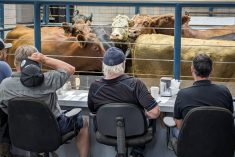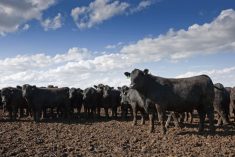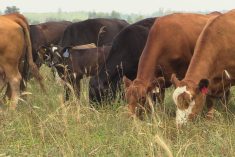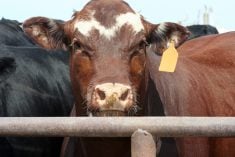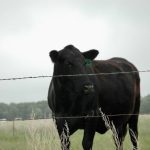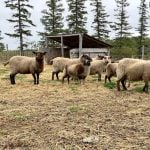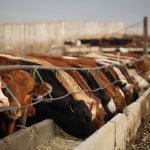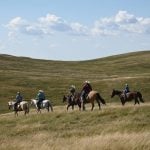Compared to last week, western Canadian feeder cattle prices were relatively unchanged. Stronger export demand appears to be supporting the market in Manitoba and certain pockets in Saskatchewan; however, Alberta feedlot interest remains subdued.
Adverse weather continues to plague southern Alberta. Snow and freezing temperatures followed by brief melting periods have resulted in very poor pen conditions. Overland flooding is also wreaking havoc in some areas. Cost per pound gains are increasing and current pen closeouts are hovering in negative territory. Barley prices continue to percolate higher and astronomical straw values have increased yardage costs.
Read Also

U.S. grains: CBOT soybeans, corn, wheat fall in USDA data aftermath
Chicago grains took a dive on Friday, following a closely watched U.S. government crop report and the release of export data that could provide clues into Chinese buying.
In central Alberta, Simmental-blended medium-frame steers with heavy to medium flesh weighing 970 lbs. traded for $154 while mixed heifers averaging just over 900 lbs. sold for $147. In central Saskatchewan, tan steers weighing 925 lbs. were quoted at $162. According to the U.S. Department of Agriculture, in Mitchell, South Dakota, 900-lb. steers sold for US$135 (C$170). Stronger values south of the border appear have caused yearling exports to increase over the past couple of weeks. It’s also that time of year when yearling supplies tend to decline and sales volumes are dwindling.
Calf prices appear to be holding value for the time being. A small group of black steers weighing just over 500 lbs. were quoted at $238 in central Saskatchewan. Charolais-blended steers averaging 620 lbs. traded for $212 in southeastern Saskatchewan. Manitoba has received less than 40 per cent of normal precipitation over the past 30 days, so conditions are quite favourable for backgrounding and feeding.
I’m looking for a bounce in the feeder market over the next couple of weeks. The blizzard conditions in Iowa and Nebraska should strengthen the fed cattle market and this will spill over into the feeder complex. It’s that time of year when feeder cattle supplies decline. Feedlot are shopping for feeder cattle deliverable in two or three weeks, in an effort to secure supplies when pen conditions improve.
— Jerry Klassen manages the Canadian office of Swiss-based grain trader GAP SA Grains and Produits Ltd. and is president and founder of Resilient Capital, specializing in proprietary commodity futures trading and market analysis. Jerry consults with feedlots on risk management and writes a weekly cattle market commentary. He can be reached at 204-504-8339.






